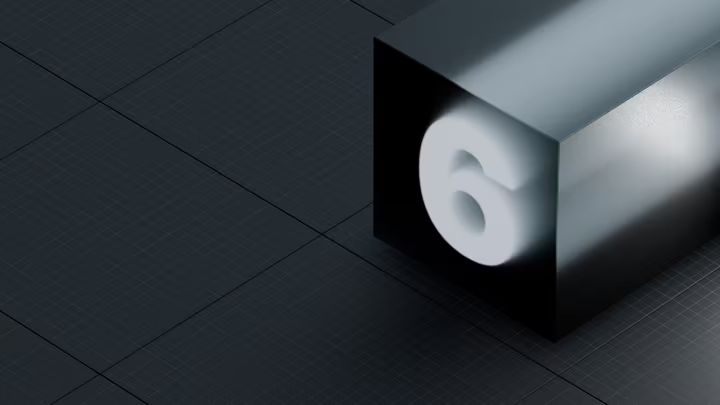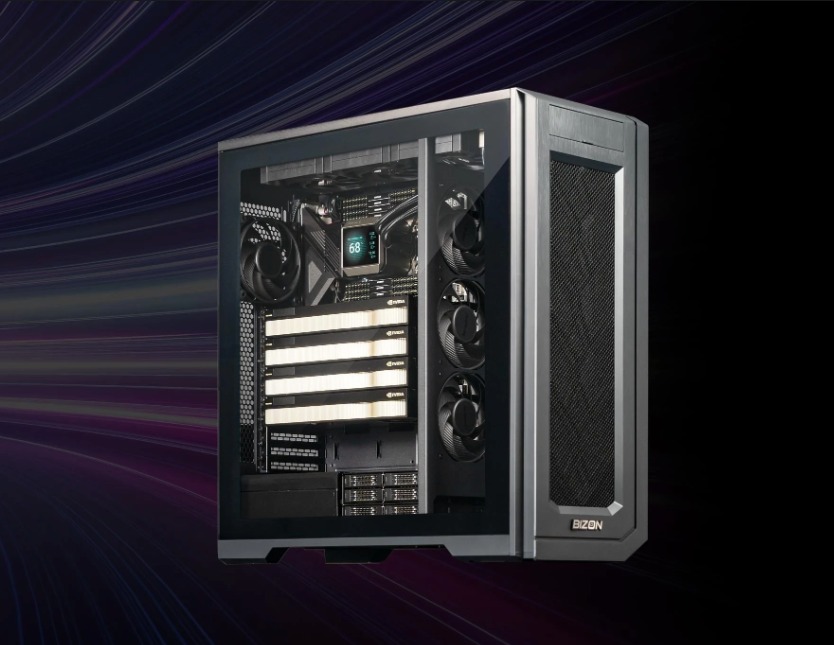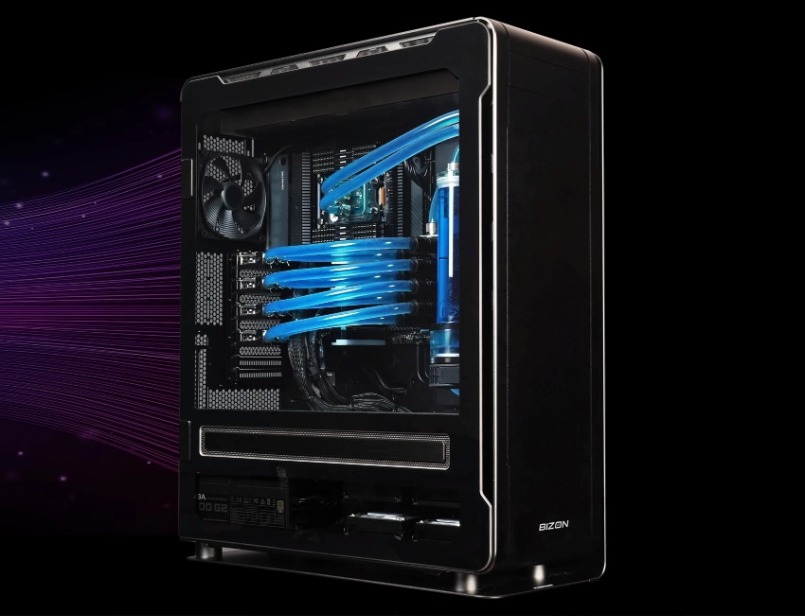Table of Contents
New Unity 6: Features & Enhancements, Recommended hardware
Introduction
Unity Technologies has once again pushed the boundaries of what is possible in game development with the preview release of Unity 6. Known for its versatility and power, Unity has long been a favorite among developers for creating games and interactive experiences across a wide range of platforms. Unity 6 takes things a step further with an array of new features, enhancements, and optimizations that are set to transform the game development landscape.
In this post, we’ll break down all the key details of Unity 6, explore its major advancements, recommended hardware, and analyze what they mean for developers and creators. From the core engine enhancements to the expanded support for machine learning and cloud-based workflows, Unity 6 aims to be the most comprehensive release yet. We will also highlight how using Bizon’s powerful workstations can help maximize the potential of these new features, allowing users to achieve even greater performance and productivity.

Unity 6: A New Era for Game Development
Unity 6 is not just a routine update—it represents a significant leap forward in the engine’s evolution. The focus of this release is on four core pillars: performance, visual fidelity, developer tools, and platform flexibility. Unity has integrated several new technologies and architectural changes to achieve these goals, making the engine more powerful and capable of handling even the most complex game worlds.
For developers utilizing Bizon’s high-performance systems, these new features can be seamlessly integrated into your workflow, leveraging the latest in GPU acceleration and multi-core CPU power to take full advantage of the upgraded engine architecture. Bizon workstations, such as the Bizon X5500 or the Bizon ZX5500, are equipped to handle the heavy computational demands of Unity 6, ensuring smooth performance even with complex, large-scale projects.
Engine Performance and Efficiency: Setting a New Standard
One of the primary goals of Unity 6 is to deliver unprecedented levels of engine performance and efficiency. Unity Technologies has rebuilt several key aspects of the engine to reduce latency, improve runtime stability, and optimize resource utilization.
- Improved Memory Management: Unity 6 introduces a new memory management system that optimizes how assets are stored and accessed, reducing the risk of memory leaks and fragmentation, which have been common challenges in large-scale projects.
- Optimized Asset Loading: With a new asynchronous asset streaming system, Unity 6 significantly improves loading times, allowing developers to build larger and more complex game worlds without worrying about long startup delays or performance hiccups.
- Parallel Processing Capabilities: By reworking how the engine handles multi-threaded processing, Unity 6 takes better advantage of modern multi-core CPUs. This results in smoother frame rates and improved performance, even under heavy computational loads.
Bizon workstations, which offer multi-core CPUs and high-bandwidth memory configurations, are perfectly suited for handling these enhancements. Developers can expect reduced iteration times and the ability to work with more demanding game systems without encountering performance bottlenecks.
Cutting-Edge Graphics and Visual Fidelity
Unity 6 is setting new standards in terms of visual fidelity. With this release, Unity introduces several enhancements to its graphics engine, making it possible to create more visually stunning and realistic environments. These updates are aimed at enabling developers to produce next-generation visuals that can rival AAA titles, all while maintaining excellent performance.
- High Dynamic Range (HDR) Rendering: Unity 6’s new HDR capabilities allow for a wider range of color and lighting effects, making environments look more lifelike and visually immersive.
- Enhanced Global Illumination (GI): Unity has revamped its GI systems to support both real-time and baked lighting, offering improved performance and visual quality. This results in more realistic shadows, reflections, and ambient lighting that adapt dynamically to scene changes.
- Advanced Ray Tracing: With support for more advanced ray tracing techniques, Unity 6 allows for highly realistic reflections, shadows, and complex light interactions, providing a new level of depth and realism to games and interactive simulations.
With the high-end GPUs and optimized cooling systems in Bizon workstations, developers can unlock the full potential of these visual improvements without compromising on stability or performance.
Next-Generation AI and Machine Learning Tools
One of the most exciting aspects of Unity 6 is its integrated AI and machine learning toolset. As games become more sophisticated, developers need robust AI systems to manage everything from NPC behaviors to procedurally generated environments. Unity 6 addresses these needs by incorporating powerful machine learning frameworks directly into the engine.
- Machine Learning Agents Toolkit (ML-Agents): Provides a powerful set of tools to train and deploy machine learning models within their projects, creating smarter NPCs, optimizing game strategies, and simulating complex systems.
- Behavioral Cloning and Reinforcement Learning: Developers can implement reinforcement learning algorithms, enabling NPCs and game elements to adapt and learn in real-time based on player interactions.
- Procedural Content Generation: With AI-driven procedural generation tools, developers can automate the creation of levels, worlds, and environments, reducing the manual workload and enabling a greater focus on creativity.
These advancements are particularly useful for developers working with Bizon’s advanced GPU configurations, such as those equipped with NVIDIA’s latest Tensor Core GPUs. The high-performance processing power enables faster model training and real-time machine learning applications, making it easier to implement AI solutions efficiently.

Developer Productivity and Workflow Enhancements
Unity 6 isn’t just about powerful visuals and advanced AI—it’s also focused on making the development process more efficient. The new version comes with several updates to the editor and workflow tools designed to reduce the learning curve and speed up project iterations.

- Visual Scripting Improvements: Unity has overhauled its visual scripting system, making it more intuitive and powerful.
- Unity Scene Manager Upgrades: Supports larger and more complex scenes, making it easier to navigate and manage complex game environments with hundreds or thousands of elements.
- Enhanced Animation Tools: Offers more control over animations with a revamped animation editor, advanced rigging tools, and improved keyframing capabilities.
With the help of Bizon’s purpose-built workstations, these tools can be utilized to their maximum potential, providing smoother and more responsive development environments. By reducing lag and increasing rendering speed, Bizon systems enable creators to iterate and refine their work quickly.
Conclusion
Unity 6 is not just an evolution of its predecessor—it’s a reimagining of what a game engine can be. With its focus on performance, visual fidelity, and developer-centric tools, Unity 6 is poised to become the go-to choice for creators aiming to build next-generation games and interactive experiences. Whether it’s pushing the boundaries of real-time ray tracing, developing complex AI behaviors, or creating massive, immersive worlds, Unity 6 equips developers with the tools they need to turn their vision into reality.
This release also showcases Unity’s commitment to broadening its scope beyond traditional game development, enabling innovative uses in industries such as architecture, engineering, automotive, and even AI research. As interactive technology continues to grow, Unity 6’s flexibility ensures it can adapt to a variety of high-performance computing needs. With built-in support for machine learning models, advanced visual rendering, and real-time multi-platform deployment, Unity 6 sets a new standard for what game and simulation engines can achieve.
At Bizon, we understand the immense computational demands that these cutting-edge tools place on hardware. That’s why we provide a range of high-performance workstations specifically designed to handle the intensive processing loads associated with game development, AI training, and real-time rendering. Equipped with powerful multi-core CPUs, high-memory configurations, and the latest GPUs like NVIDIA’s RTX 50xx/40xx series, Bizon workstations are tailored to meet the evolving needs of modern developers.
For Unity 6 users, our workstations offer not just raw power but also stability and reliability. Whether you’re working on photorealistic environments, developing complex interactive simulations, or managing multi-platform projects that need real-time optimization, Bizon systems ensure a smooth, efficient workflow. With advanced cooling systems and support for multi-GPU setups, our workstations allow you to unlock the full potential of Unity 6 without worrying about system limitations or performance bottlenecks.
If you’re ready to explore the next frontier in game development and interactive media with Unity 6, reach out to us today to learn more about our high-performance solutions tailored for game developers, 3D artists, technical directors, and researchers. At Bizon, we strive to empower creators by providing the best hardware solutions for every stage of your creative journey.
For more information and to download the new Unity 6 preview, visit the official release page: Unity 6 Preview.

